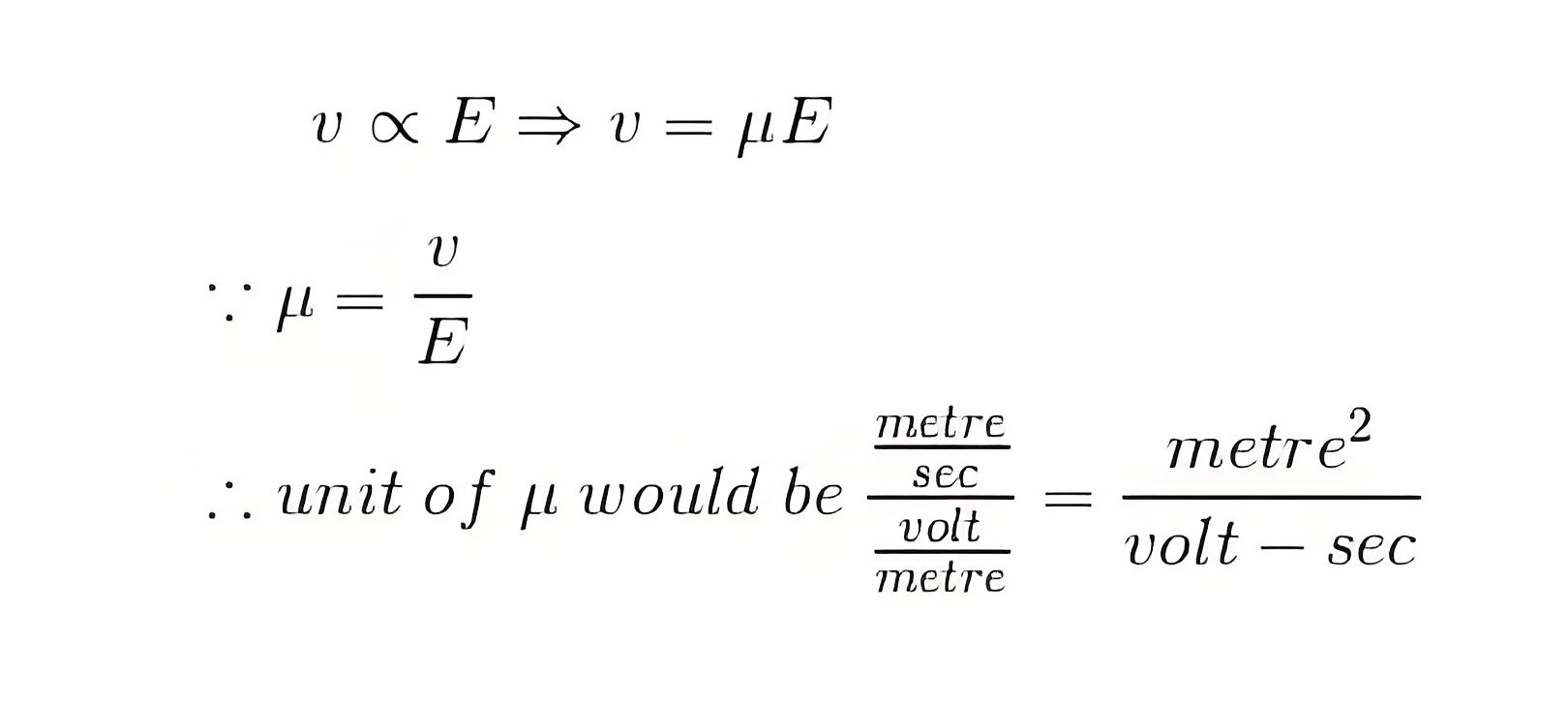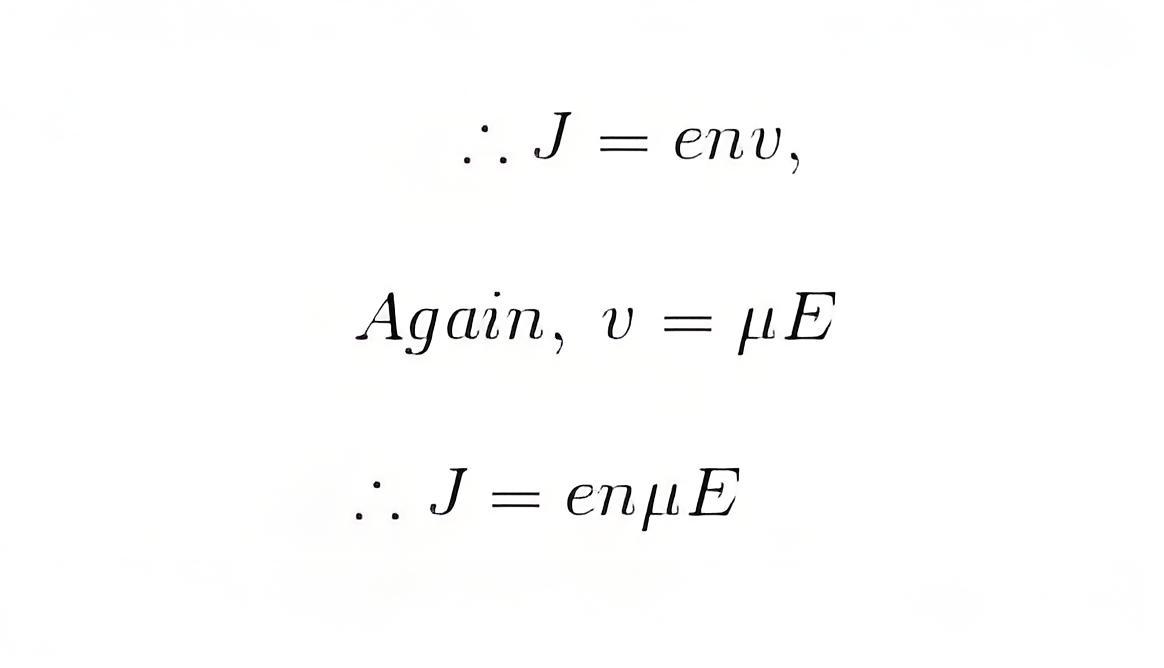Mobility of Charge Carrier
Mobility of Charge Carrier Definition
Mobility of charge carriers is defined as the ratio of drift velocity to the applied electric field in a conductor. Drift velocity depends on two factors: the intensity of the electric field and the conductor’s mobility. For the same electric field, different metals will have different drift velocities due to their unique mobility of charge carriers.
In metals, the band of valence electrons may not be completely filled, allowing free electrons to move. These free electrons are not attached to specific atoms and move independently throughout the metal.
Now let us assume that one electric field of Ε volt/metre is applied across the piece of metal. Due to influence of this electric field the free electrons will be accelerated. But due to collisions with much heavier ions, the velocity of electrons cannot be increased infinitely. At each collision the electron losses its kinetic energy and then regains its acceleration due to presence of external electric field. In this way the electrons reach to their finite steady Drift velocity after certain time of applied electric field. Let us assume this drift velocity is v metre/sec. It is needless to say the magnitude of this drift velocity of electrons is directly proportional to the intensity of the applied electric field Ε.

Here, μ is the proportionality constant known as the mobility of electrons. This mobility determines how easily electrons move through the conductor. When steady drift velocity combines with the random thermal motion of electrons, there is a net drift opposite to the direction of the electric field.
This phenomenon constitutes an electric current. The current density J would be defined as, uniformly distributed current passing through a conductor per unit perpendicular cross-sectional area the conductor.
J = current density = current per unit area of conductor. More precisely current density can be defined as the uniformly distributed current passing through a conductor of unit cross-sectional area.
If the concentration of electrons per cubic metre is n,
nv = number of electrons crosses per unit time per unit cross-section of the conductor.
Therefore total charge crosses the unit cross-section of the conductor per unit time is env Coulombs. This is nothing but the current density of the conductor.
Again for the conductor of unit dimension, cross-sectional area A = 1 m 2

length L = 1 m, applied electric field E = V/L = V/1 = V (V is applied voltage across the conductor). Current I = J and resistance R = ρ = 1/σ, where, ρ is resistivity and σ is conductivity of the conductor.

The Electricity Encyclopedia is dedicated to accelerating the dissemination and application of electricity knowledge and adding impetus to the development and innovation of the electricity industry.













